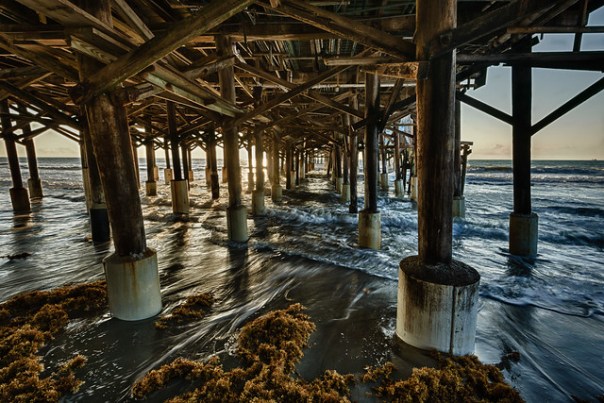Intro / Description
Cruising is a great way to vacation and Florida is a great departure point. There are several ports where you can board a ship, leave your everyday concerns behind, and set sail for exotic destinations. Tampa, Miami, Palm Beach, Port Everglades, and Port Canaveral all offer cruises – both seasonal and some that go farther. We recently cruised out of Tampa on the Carnival Paradise sailing to Grand Cayman, Cozumel, and back.

The party starts – The Carnival Paradise departing Tampa.
Cruising provides a large choice of activities: Spend time with friends and family, relax, sample gourmet level food, party, attend shows and other entertainment, lose money at the casino, etc. Ports of call along the way let you to see the sights and sample what life is like in other cultures. You can sign up for excursions to do things you may not get a chance to do everyday. And even if your trip isn’t photography centric, you can sneak in some non-interference photography ops.

A snorkeling excursion off of Grand Cayman – Lynn’s getting ready to jump in.
Your preferences will help you select which cruise to go on. For ours, we were limited to a small selection since we wanted to leave from Tampa on a specific date.
Info for Photographers
There are some cruises that cater to photographers and some destinations that are more photogenic than others. Why you are going, where you are going, and what you expect to see will decide what equipment you should bring. Since our cruise was a family get together, I brought a much lighter gear bag than on our Alaskan cruise in 2009. We went snorkeling in Grand Cayman, so I took my old Canon G9 (which still works remarkably well) and the underwater housing I have for it. I also wanted to take my IR modified camera to use at the Mayan ruins in Cozumel. Your trip and interests will be different so you’ll need to plan accordingly.

The San Gervasio Arch Structure on Cozumel. This Mayan ruin dates from 1000 to 1600 AD.
Photo hints:
Spend some time enjoying sunrise and sunset. Relax, get a cup of coffee or a drink and sit and watch. It’s hard to tell what will develop, especially when there are clouds around. Do some research before you go. Flickr is a great place to search for the places you’re going to see what others have posted.
If you’re on a family trip, you’ll want to document all the fun and together times. Be careful not to spend too much time away from your family making photographs.
One good idea is to combine everyone’s photos into a common pool and share them so that everyone has images of everything that happens. You’ll be glad you did.
Another thing to think about is creating a photo book from your images. Make several copies and share them with your travel companions. They’ll make good reading several years in the future and will remind you of the good times.
Always keep a camera with you and when you’re wandering around the ship, keep an eye out for interesting art work or interesting people.
A cruise is also a good time to practice some food photography. Take your camera to dinner and see if you can create some drool worthy images.
Tripod/Monopod: The ship’s motion will make long exposures from the deck problematic. A Gorillapod or something similar would be handy for HDR or long exposure photography inside the ship. You might also want to use it for some time-lapse photography from a railing on deck. This can be interesting as you cruise along a shoreline or enter / leave a port.
Lenses: This depends on your destination / interests. Bring a versatile zoom or a small assortment of lenses. On a family cruise, you don’t want to be lugging a huge camera bag around all the time. If you’re going to Alaska or some other once in a lifetime destination, you’ll want to take your full kit.
Best time to visit: Do some research on your departure port and destinations. April is a great time for the route we took. It’s before hurricane season and the weather is warm, but not too warm yet. If you’re into birding, April is a big time in the Caribbean for migration. I only did some incidental birding, but I did get three life birds in Cozumel. The Mayan ruins at San Gervasio are out in the middle of the jungle, so there are birds around. I saw a Black-and-white Warbler, a Ruby-throated Hummingbird, and several others I couldn’t get a photo of or ID. I also saw this one circling the ship when we returned:

A Magnificent Frigatebird
Other:
I’ve posted three sets of photos from this cruise on Flickr. If you look through them, you can get an idea of the things you’ll see on a similar cruise.
For descriptions of a different type of cruise experience, you can go back and read my three posts about our Alaska cruise here, here, and here.
Summary
You’ll have a great time!
Thanks for stopping by and reading my blog. Now, get cruising and make some photos!
©2012, Ed Rosack. All rights reserved.































